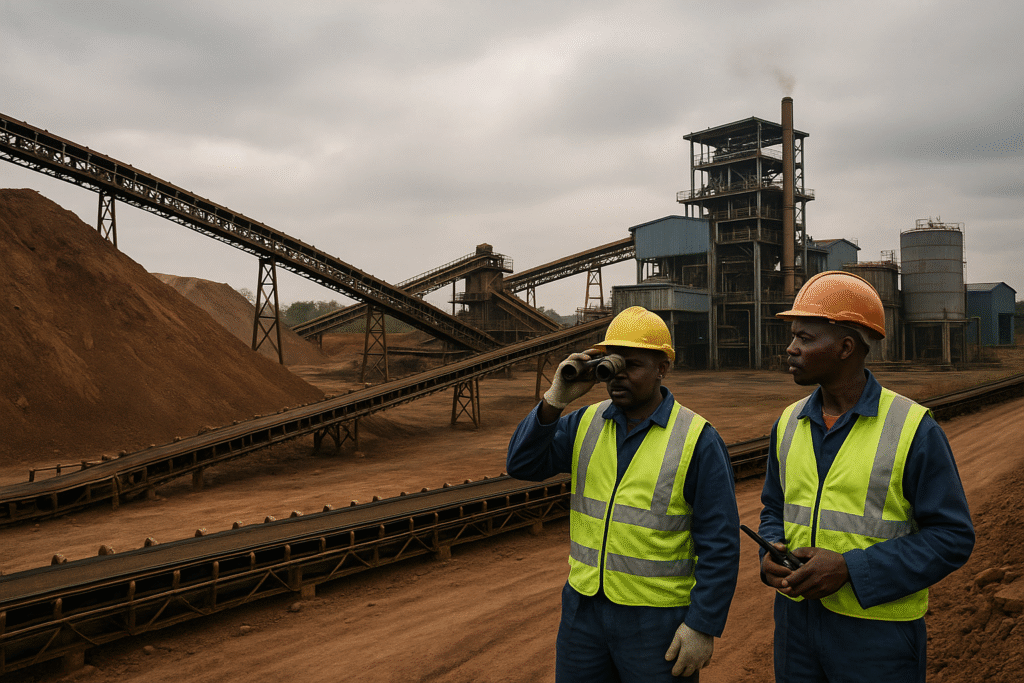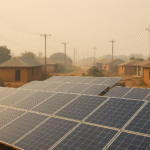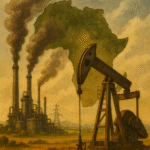Africa’s critical minerals are once again in the global spotlight, but not only for what is being mined, but also for what is not being made. As the clean-energy transition accelerates, African governments and investors face a defining question: will the continent remain a supplier of raw materials, or will it build the industries that turn those minerals into value?
The answer matters. The minerals beneath African soil are essential for batteries, electric vehicles, solar panels, wind turbines, and the digital devices that power modern society. Demand for lithium, cobalt, rare earth elements, nickel, graphite, copper, and manganese is projected to surge for decades. Many of these minerals are abundant in Africa. Yet the continent captures only a small proportion of the final value created along the supply chain.
This contradiction is not new. It reflects the legacy of an extractive model that exports opportunity and imports dependency. The risk today is that a green transition built on critical minerals could still leave Africa trapped in old economic patterns.
The Promise and the Paradox
Africa holds roughly 30 percent of global reserves of the minerals most vital to the clean-energy future. The Democratic Republic of Congo produces more than two-thirds of the world’s cobalt. Southern Africa dominates manganese. New lithium discoveries in Zimbabwe, Namibia and Malawi are drawing global attention. Mozambique and Tanzania are poised to become major graphite players.
But while Africa exports minerals, it imports most of the technologies those minerals enable. The continent plays a commanding role in the first step of global value chains, and a negligible role in every step thereafter.
It is a familiar tale:
- Extraction happens here
- Refining happens elsewhere
- Manufacturing happens far away
- Jobs and high-value exports happen outside the continent
Industrialisation ambitions have been expressed in policy after policy. Implementation has not kept pace.
Why the Value Chain Stops at the Pit Head
The gap between extraction and industrialisation is driven by a combination of structural barriers.
High financing costs and limited local capital
Investors continue to see African downstream projects as risky. Foreign-currency loans expose countries to exchange-rate shocks. Domestic banking systems have limited capital for long-term industrial investment.
Mining attracts investment. Processing does not, yet.
Technology and skills dependency
Battery-grade chemical refining, rare-earth magnet production and cathode manufacturing require advanced capabilities that few African countries currently possess. The result is technological dependency at the precise point where the most value is created.
Infrastructure bottlenecks
Downstream processing requires abundant electricity, water, transport corridors and efficient logistics. Many mineral belts remain far from the infrastructure needed for globally competitive manufacturing.
Fragmented governance and unstable industrial policy
Export bans, beneficiation mandates and incentives are often introduced abruptly or without regional alignment. The result is regulatory uncertainty rather than investor confidence.
Global geopolitics
Major economies are treating critical minerals as strategic assets. Without coordinated bargaining power, African governments negotiate separately, weakening collective leverage.
These forces combine to keep Africa at the extractive end of the chain, even as global demand expands.
The Emerging Opportunity
Despite headwinds, the pathway to industrialisation is beginning to open. Several shifts are working in Africa’s favour.
- A fast-growing regional consumer base is creating domestic demand for batteries, electric mobility and clean-energy technologies.
- Regional integration through the African Continental Free Trade Area (AfCFTA) provides a foundation for harmonised standards, linked markets, and cross-border industrial clusters.
- Strategic industrial hubs are forming near mineral deposits from cobalt in Central Africa to graphite in Mozambique, enabling economies of scale.
- Circular-economy innovation is emerging, with recycling and metals recovery offering lower-carbon pathways and green jobs.
- New financing models are under consideration, including blended finance, local-currency instruments and regional investment platforms.
For the first time in decades, Africa has both mineral leverage and geopolitical attention. The question is whether it can convert interest into industry.
A New Value-Chain Vision
Moving from extraction to industrialisation demands strategic clarity. Industrial policy must define where Africa wants to compete, and how.
The most promising areas for value capture include:
- Processing and refining of battery-grade minerals
- Manufacturing of cathodes, anodes and precursor materials
- Assembly of batteries, electric motor components and energy-storage systems
- Recycling and materials recovery to reduce reliance on new mining
- Research, development and innovation ecosystems for green technology
In each of these steps, the value created is many multiples higher than in raw-ore export.
Industrialisation is not simply an economic upgrade. It shifts power, ownership and governance. It changes who decides how Africa’s minerals are used, and who benefits when they are.
What Must Change
Africa’s industrial transition requires a structural break from the past extractive model.
1. An Africa-wide strategy
Africa needs unified negotiating positions for global critical-minerals markets, not 50 separate voices. Regional value chains cannot succeed without policy coordination.
2. Capital that stays and circulates on the continent
Local-currency finance from African banks, pension funds and development institutions must scale dramatically. If capital comes only from outside, so will control.
3. Skills and technology transfer anchored at home
Industrialisation must build African expertise, not simply lease foreign equipment and consultants.
4. Infrastructure designed around industry
Transport corridors, special economic zones and reliable power must align with mineral-processing hubs.
5. Social inclusion and environmental protection
Local communities must share in revenues and jobs. Environmental safeguards must be strong, enforced and domestically owned.
This is how critical minerals become catalysts for transformation rather than symbols of inequality.
A Just Transition for Minerals
Much of the global debate on a “just energy transition” focuses on coal phase-out and renewable deployment. For Africa, justice must also apply to the minerals powering that transition.
A just minerals future requires:
• Fair value capture in African economies
• Transparent contracts and clean governance
• Workers’ rights and community participation
• Environmental stewardship from mine to factory
• Industrial growth that supports energy access and development
Justice is not a slogan. It is a structure.
The Next Inflection Point
Critical minerals represent a once-in-a-century industrial opening. If Africa fails to industrialise now, it may miss the economic wave shaping the rest of the 21st century. If it seizes the moment, it could emerge as a global player, not merely the marketplace for finished goods, but a manufacturer of the technologies that power the future.
Africa has been here before: vital to global industry, yet peripheral to its value. This time, the stakes are higher. The green transition cannot be clean if it repeats the injustices of the fossil-fuel economy.
Industrial sovereignty, not extraction, must be the foundation of Africa’s minerals future.
The world needs Africa’s resources. Africa must ensure it needs Africa’s industry too.



